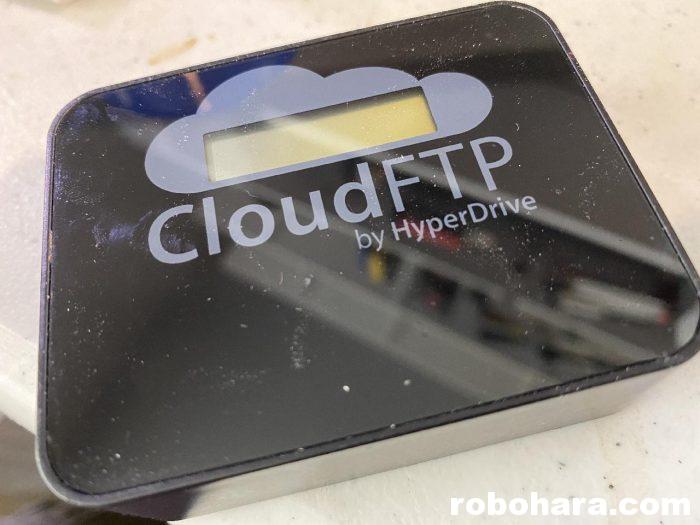
I find it easier to throw away big things than small things. Small things can always be shoved into a drawer, placed on a shelf, or tossed into a closet. And when it comes to technical gadgets it’s often the small things cost big bucks, which makes some of these things more difficult to part with.
CloudFTP was a wireless device that launched on Kickstarter back in 2012. The small box served as a tiny web/FTP server that contained a USB port and was powered by a rechargeable battery. Any files stored on the attached USB stick could be accessed over WiFi.
For the CloudFTP to make sense, you’ll have to mentally time travel back to 2012. The iPhone 5 (released in September 2012) came with 16GB, 32GB, or 64GB, which was all-to-easy to fill with applications, pictures, and music files. The CloudFTP served two purposes: it allowed downloading/streaming files from the device, and served as an inexpensive way to expand a device’s storage space (USB storage was relatively inexpensive, even back then). The other thing to consider is that few people had unlimited data plans for their mobile devices in 2012. The CloudFTP used a wireless connection, which did not count against your mobile plan.
I purchased my CloudFTP from a friend who backed the original Kickstarter campaign. I don’t remember why that person didn’t want to keep it, but I had a use for it. The iPad I owned at the time did not have a cellular connection (wireless only), and the CloudFTP was a convenient way for me to play movies and easily expand my music storage.
At the Tulsa Oklahoma Video Game Expo in 2013, I attempted to use the CloudFTP as part of my marketing plan for my book Invading Spaces. I put the first chapter of the book, a bunch of pictures, some mp3s, and a few other files on the CloudFTP, and left the device turned on for the duration of the convention. I turned on anonymous access (so no one would need a password to access the data), and sprinkled small flyers around the convention (including out in the hallways and even the bathroom) advertising the device’s IP address and hinting that it contained “secret” files. The convention lasted eight hours, and by the end of the day I believe a total of three people accessed the device. That night I tossed the CloudFTP in the back of my desk drawer, where it’s been for the past seven years.
A lot has changed since 2012. The iPhone I own today has 256GB of storage — more than enough for all the pictures and music I need to store. (I have approximately 5,000 mp3s on my phone.) More than that, I now have an unlimited data plan on my phone; any movies or music I want to consume, I can do via online services. The USB storage on the CloudFTP is nothing compared to the storage on Netflix and Spotify.
About once a month while digging through my desk, I’ll fumble across the CloudFTP and try and come up with a use for it. The closest I’ve come is Raspberry Pi storage, but the Raspberry Pi has four USB ports — why would I need a fifth one?
When cleaning, I tend to hang on to the little things. Then again, I have several drawers full of little things. Maybe parting with a few that I no longer use will free up room for some new ones.
